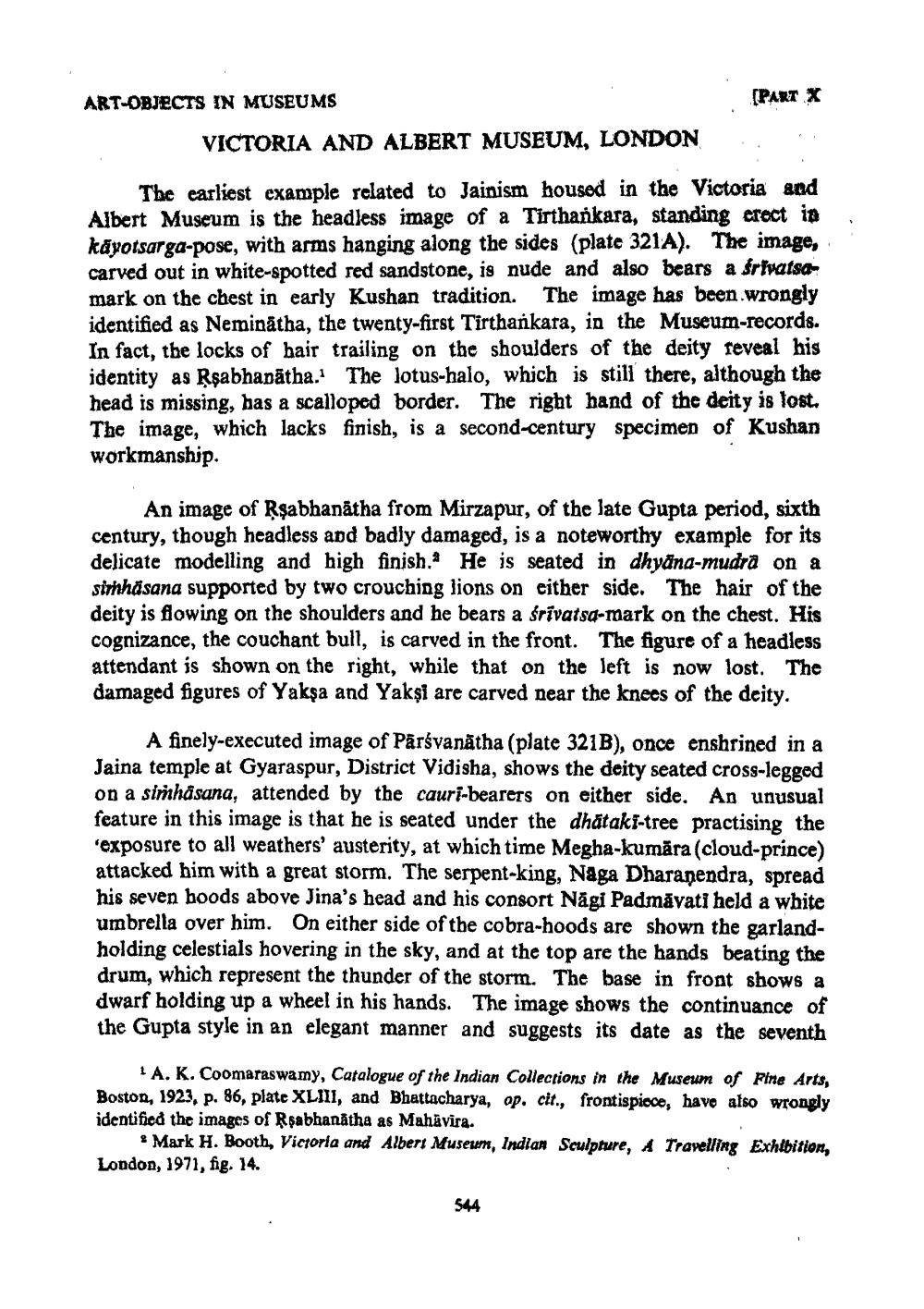________________
[PART X
ART-OBJECTS IN MUSEUMS
VICTORIA AND ALBERT MUSEUM, LONDON
The earliest example related to Jainism housed in the Victoria and Albert Museum is the headless image of a Tirthankara, standing erect in käyotsarga-pose, with arms hanging along the sides (plate 321A). The image, carved out in white-spotted red sandstone, is nude and also bears a frivatsamark on the chest in early Kushan tradition. The image has been wrongly identified as Neminātha, the twenty-first Tirthankara, in the Museum-records. In fact, the locks of hair trailing on the shoulders of the deity reveal his identity as Rşabhapatha. The lotus-halo, which is still there, although the head is missing, has a scalloped border. The right hand of the deity is lost. The image, which lacks finish, is a second-century specimen of Kushan workmanship
An image of Rşabhanātha from Mirzapur, of the late Gupta period, sixth century, though headless and badly damaged, is a noteworthy example for its delicate modelling and high finish. He is seated in dhyāna-mudra on a simhasana supported by two crouching lions on either side. The hair of the deity is flowing on the shoulders and he bears a śrivatsa-mark on the chest. His cognizance, the couchant bull, is carved in the front. The figure of a headless attendant is shown on the right, while that on the left is now lost. The damaged figures of Yaksa and Yakşi are carved near the knees of the deity.
A finely-executed image of Pārsvanātha (plate 321B), once enshrined in a Jaina temple at Gyaraspur, District Vidisha, shows the deity seated cross-legged on a simhasana, attended by the cauri-bearers on either side. An unusual feature in this image is that he is seated under the dhätaki-tree practising the 'exposure to all weathers' austerity, at which time Megha-kumāra (cloud-prince) attacked him with a great storm. The serpent-king, Naga Dharanendra, spread his seven boods above Jina's head and his consort Nägi Padmăvati held a white umbrella over him. On either side of the cobra-hoods are shown the garlandholding celestials hovering in the sky, and at the top are the hands beating the drum, which represent the thunder of the storm. The base in front shows a dwarf holding up a wheel in his hands. The image shows the continuance of the Gupta style in an elegant manner and suggests its date as the seventh
1 A. K. Coomaraswamy, Catalogue of the Indian Collections in the Museum of Fine Arts, Boston, 1923, p. 86, plate XLIII, and Bhattacharya, op. cit., frontispiece, have also wrongly identified the images of Rsabhanātha as Mahavira.
Mark H. Booth, Victoria and Albert Museum, Indian Sculpture, A Travelling Exhibition, London, 1971, fig. 14.
544




